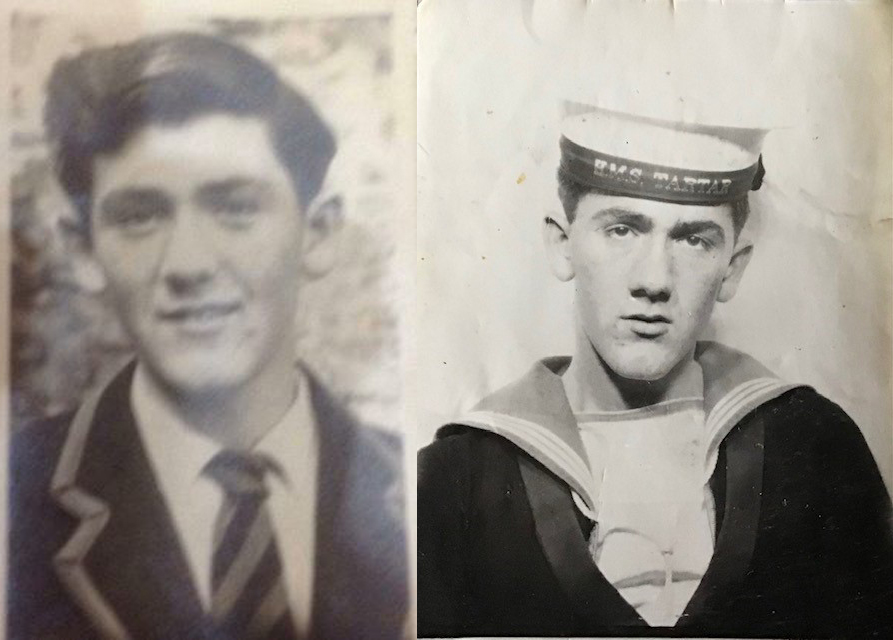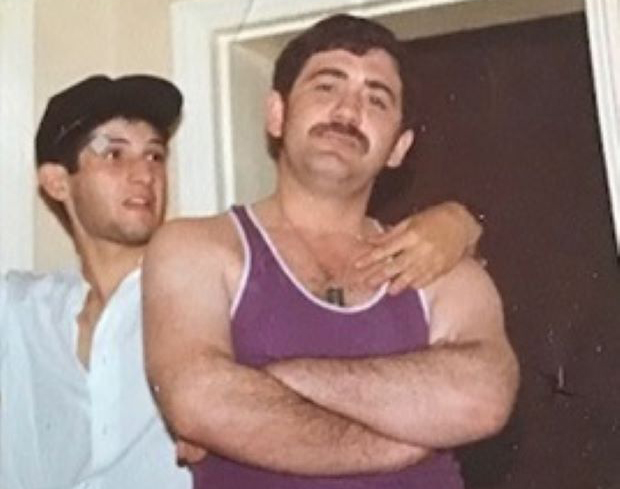
Terrence Lionel Seymour Higgins, known as Terry, was born 10 June 1945 in Priory Mount Hospital, Pembrokeshire. He lived with mother Marjorie at 13 Priory Avenue in Haverfordwestand and attended the local all-boys grammar school from 1956-60.
His mum was a nurse and oldest of nine children. She passed away in 1974, eight years before Terry’s death. He went to her funeral with his friend Linda Payan. While he was an only child, he had many cousins through his four aunts and four uncles.
He joined the Royal Navy when he was 18 years old, but was later subject to a dishonourable discharge. It seemed this was by choice. Having told a senior officer he was gay, said officer replied with “if we booted out everyone who was gay we wouldn’t have a navy left”. Having been refused discharge, he painted red hammer and sickle motifs around his ship, and was formally charged and asked to leave.
Terry moved to London, living in various up and coming areas, including Notting Hill and Streatham, before sharing a flat with friends in Barons Court Road, West Kensington. He worked for Hansard from 1976, and left for a PA role in the Middle East. On his return, he worked as a computer operator, for The Times and as barman.

A DJ and music enthusiasts, he travelled regularly to New York to buy records. He was really into the leather scene at the time, known affectionately to his friends as ‘Fat Terry’ and was a gay rights activist, involved in an altercation with the police at Pride 1980. Julian Hows tells how following the arrest of a radical activist, ‘the last quarter of the march sat down… refused to move… and several more arrests took place.’ This includes Hows and Higgins. Terry, ‘dressed head to toes in leather, leaped from the “HEAVEN” [nightclub] float leather belt in hand attacking the police with it screaming “how dare you bitches attack my friends”.’
Terry was a self-taught piano player, enjoyed languages – speaking French, German and Spanish – and keen on astrology. He authored a book on the subject, The Living Zodiac, in 1974 with fellow Geminis received a generous write up. He travelled regularly to New York to get the latest records for his DJ sets – bringing back other bits of US gay culture – and holidayed in California.
During the summer of 1981, he became quite conscious about his weight. Although he only weighed about 13 stone, which was quite normal for a man of his height, he had a number of friends who were some 10 years younger and a couple of stones lighter. Terry decided to embark on another crash diet, but this time as the weight came off he also developed a rash. Towards the end of the summer Terry found it hard to stop losing weight, and the rash wouldn’t go away either. At first, his doctors thought little of it, although they grew more concerned as, over the following months, he gradually became weaker.
Tragedy struck in the summer of 1982 when in the April he collapsed on the dance floor at gay disco Heaven, and was taken to St Thomas's Hospital in London. He discharged himself after a number of days when doctors were unable to diagnose or treat his condition.
In the middle of June, Terry collapsed again, this time while working as a DJ in Heaven nightclub. He was taken back to St Thomas' and readmitted to the isolation unit, where he was diagnosed as having parasitic pneumonia. Although everyone expected him to make a full recovery, he died quite suddenly on Sunday July 4, 1982. He was just 37.
His partner Rupert Whitaker witnessed his last moments and later paid for Terry’s funeral from his student grant. While Rupert had raised the possibility of this mystery US illness but was rebuffed, on Terry’s death the doctors refused to talk about his condition to Rupert because it wasn’t “family”. Rupert and Terry’s friends were told to read about it in a medical journal.
Pneumonia was given as the cause of death. Rupert, and friends like Martyn Butler who also worked in Heaven, wanted Terry to never be forgotten and that the cause of death to be known – although very little information was available about the mysterious virus referred to as GRID or AIDS at the time.
Although Britain's first AIDS case had been reported in The Lancet in 1981, it was the death of Terry Higgins that brought the disease fully into public view. His friends used his death as a platform for further action, and soon after set up Terrence Higgins Trust.
Navy photo supplied by Rupert Whitaker OBE; purple vest photo supplied by Linda Payan.

